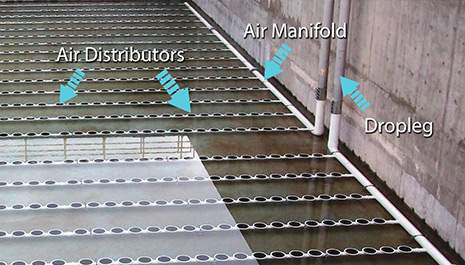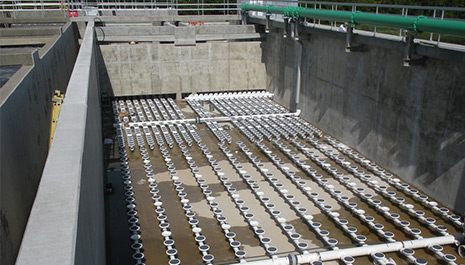The Most Thorough Guide for steam stripping
1. Do you want an economic method of cleaning up plant wastewater streams?
2. Are you looking for wastewater solution from non-volatile organics
3. We share extensive experience in for successful solution of steam stripping for VOC's organic removal and recovery requirements.
4. This guide offers you with a complete process design, necessary engineering and specifying knowledge of contacting column in detail
4. This guide offers you with a complete process design, necessary engineering and specifying knowledge of contacting column in detail
5. When these organic materials get dissolved in water can be extracted by a process which we will share in this guide known as "steam stripping."
6. The Final Result is clean water stream almost free of organic materials, and safe for recycle to a process or for disposal.
The Contents of the Ultimate Guide to Steam Stripping
#2. Know some general applications of steam stripping
#3. Get to know how steam stripping works for cleaning your plant
#4. Do you know how steam stripping columns are design and what's their functions per part?
#5. Get to know how steam stripping columns are design and their functions per part
CHAPTER 1 What is steam stripping?
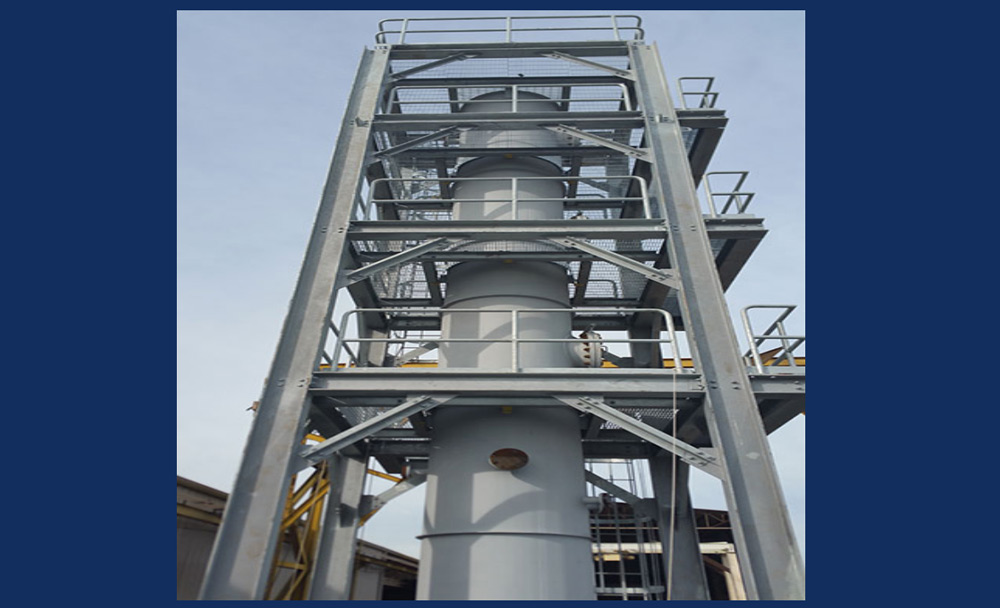
1. Stream stripping is a separation process also called separation process
2. where we use water as a heavy product and the low weight products are mixture of volatile organics (VOC's).
3. These organics are present in the feed water, in relatively small concentrations.
4. Since the volatility of the organics is a high function of temperature, means they get dissolve in high temperature contents
5. Now that's the point for you to notice: high stripping temperature of stream stripping allows removal of heavier more soluble organics from wastewater
6. The combination impacts of steam and as well as heat, cause organic material to phase change from the liquid to the vapor phase.
7. This material is then carried out with the vapor.
8. As the constant mixing issue down the tower proceeds, the effluent becomes throw within the organic material whereas the vapor part becomes additional enriched because it travels up the tower.
9. We extract harmful organic content with the help of high temperature of steam
10. This method can be processed for variable times and duration depending upon the concentration of desire contents in waste treatment. Means how clean we want our water is?
11. Hope you have gotten a clear picture of what steam stripping is.
Click here to learn about Random packing manufacturer.
CHAPTER 2 Typical Steam Stripping Applications
Here is a complete list of applications you can apply this method:
Here is a complete list of applications you can apply this method:
• Benzene removal from wastewaters Sour water (h2O and NH3)
• stripping ketone removal/recovery from wastewaters
• Oxygenate (MTBE. MEK) removal/recovery Removal of chloroform, tribromomethane and different halogenated
• Removal of organics from quench waters
• Organics recovery from leachates Alcohol (ethanol, propanol, IPA, butanol) removal from water
• Solvents recovery or removal (tetrahydrofuran, hexane, heptane)
CHAPTER 3 Get to know how steam stripping works for cleaning your plant
1. Now we will guide you through a brief detail of steam stripping working principle and basic parameters that needed to be considered
2. The configuration of a steam stripping unit dependence varies on the characteristics of the organic material to be removed, and on what is to be done with it in terms of disposal and recycle.
3. Equally Steam needs for uncovering vary with the operational pressure, the kind of organic, and therefore the degree of organic removal/recovery.
4. Further, steam needs for warmth balance functions must ought to be accounted for organic removal/recovery
A. necessary thought within the design of a steam stripper is that the reality that the column needs to be capable of handling enough steam flow to operate
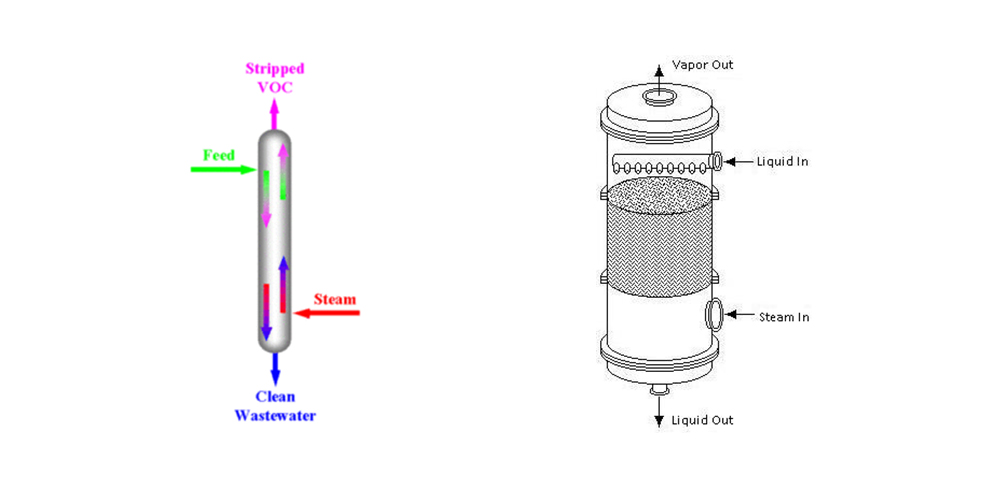
• As you may know, Start-up of any steam stripper requires heating of the feed water to the operating temperature in the stripper
• Then we have likelihood to introduce steam at the underside of the tower to produce heat and vapor flow
• Clean water exits the underside of the tower as you can see fig-2.
• The waste product is fed at the very best of tower and additionally the steam leaves the highest heavily laden with organic material.
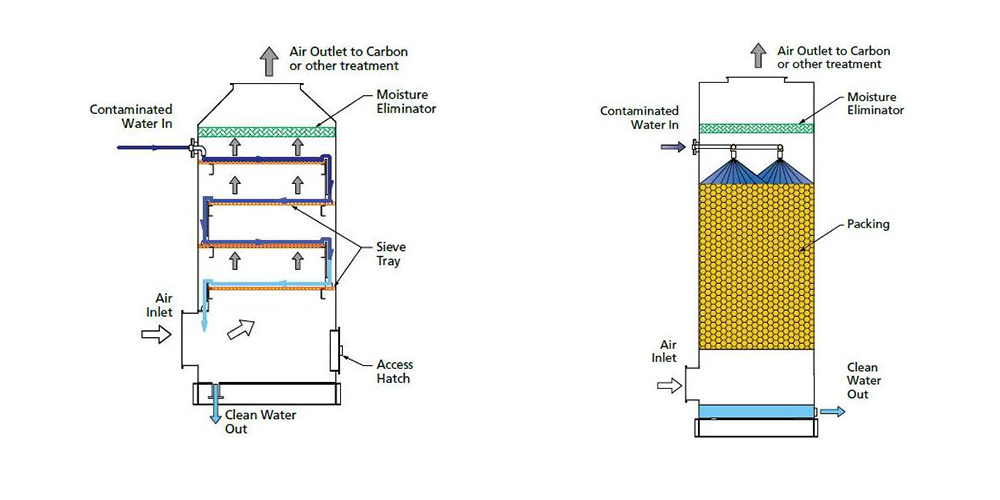
• This steam combination is then condensed and further processed.
• The principle is that you just keep in mind that on decreasing the partial pressure of the pollution with heat addition and by creating a positive mass transport from the water to the gas section with steam injection
This involves components like supply pump with heat exchanger, a packed or tray column, condenser with a separation drum, a reflux device and a decanter.
• A steam stripper includes one pump with device, a packed or dish column, a condenser with a separation drum and a reflux device, and a carafe that we'll discuss
• As you clearly imagine from figure, you introduces fluid to the stripper, it moves downside and within the packing counterflowing to the steam means opposite to its flow.
• The packing inside the column, which is the heart of it, advances the stripping process by extending contact period and the quantity of both streams.
• when going out the stripper, the vapors may either ejected into the atmosphere or is collected for purification.
• The contacting devices are placed at the center in the steam stripping system, where the mass transfer takes place
• They're vertical countercurrent vessels stuffed with these mass transfer device which are either sieve trays, structured packings or random packings.
• Combined effects of the steam mass and heat addition results organic materials to phase change from the liquid into phase change.
• As contacting yield downside the column, the vapor becomes rich in organic materials while the wastewater gets cleaner.
• The organic vapor leaves the column at the top and is condensed and recovered.
• The purified water that leaves from downside of the column has very low organic contaminant concentrations and it can be recycled back into the plant's water system.
• After the mass transfer you have your final products clean water coming downside and VOC's from upside to decanter
Role of Operating Pressure of a steam stripper?
• The in operation, column's pressures will influence your efficiency and reliableness of steam stripping.
• When you operate at reduced pressures, your conclusion are a significant big number of VOC's and vice versa.
• Steam distillation in operation at vacuum may be costly for you however extremely effective
• Operating your stripping process at or close to air pressure ends up in larger VOC's and vice versa, while not the additional expense of a vacuum system.
• At higher in operation pressures, the dissolvability of the matter will advances and distillation becomes tougher to perform.
This was a thorough explanation of Steam stripping working now we will move on to column design aspects
CHAPTER 4 Do you know how steam stripping columns are design and what's their functions per part?
• Distillation column whose working has already being discuss
• Steam stripping columns contain either trays or packing, depending on the application.
2. Second half is Overhead condenser which is a heat exchange instrumentality for compression the recent vapor effort the highest of the distillation column. Either cooling waste or air are often used because the cooling medium
3. Overhead accumulator could be horizontal (commonly) pressure vessel whereas the condensed vapor is collected.
3. Pumps we uses have a tendency for returning the reflux liquid back into the distillation column, or for pumping out the bottoms product for storage, or for pumping the feed into the distillation column.
4. Boiler that purpose you'll be acknowledged to provide the vapor stream within the distillation column
5. The last part is Feed or bottom Exchanger, which is a heat exchanger is used for heat conservation: the hot bottoms stream is used to heat up the feed stream before it enters the distillation column. As a result the bottoms product is cooled and summation to storage
CHAPTER 5 Why different packing inside stripping is used?
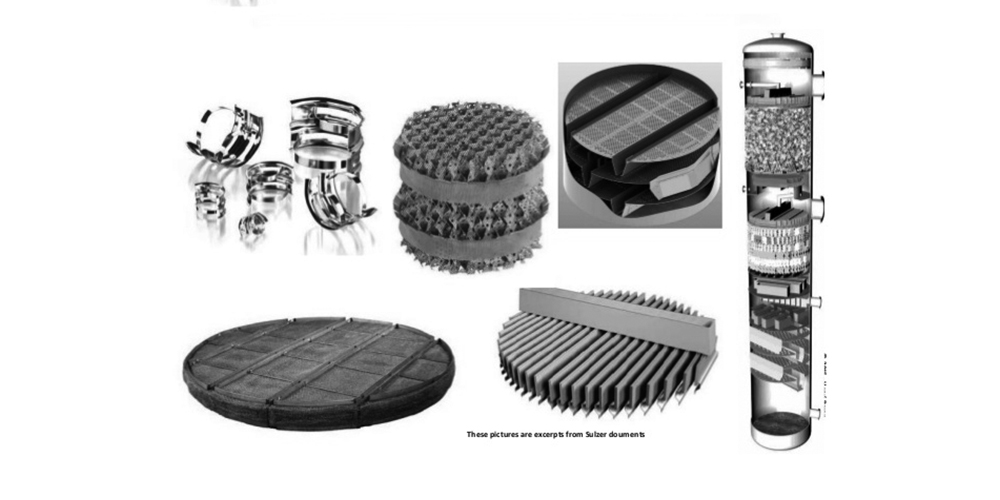
1.Why do we Choose plates or packing for distillation column
• The selection between a plate or packed column for a selected application will solely be created with complete assurance by cost accounting every design
• We can considering main benefits and drawbacks of every kind as discuss as;
• Plate columns are often designed to handle a wider and vary range of liquid and gas flow ratesthan packed columns.
• Packed columns aren't appropriate for terribly low liquid rates.
• We will predict potency of a plate with a lot of certainty than the equivalent term for packing.
CHAPTER 6 Do you know how steam stripping columns are design and what's their functions per part?
1. Now we will bring light to parts involved in this process including their functions
• Distillation column whose working has already being discuss
• Steam stripping columns contain either trays or packing, depending on the application.
• The selection between a plate or packed column for a selected application will solely be created with complete assurance by cost accounting every design
• We can considering main benefits and drawbacks of every kind as discuss as;
• Plate columns are often designed to handle a wider and vary range of liquid and gas flow ratesthan packed columns.
• Packed columns aren't appropriate for terribly low liquid rates.
• We will predict potency of a plate with a lot of certainty than the equivalent term for packing.
• You can feel easier to create provision for cooling in a very plate column; as coils is put in on the plates
• It is less complicated to create provision for the withdrawal of side-streams from plate columns.
• For corrosive liquids a packed column can typically be cheaper than the equivalent plate column.
2. Packed-column design procedures
Following steps will guide you for designing:
• Select your type and required size of packing.
• Determine your column height for the specified separation.
• Verify your column diameter (capacity), to handle the liquid and vapor flow rates.
• Choose and design your column liquid distributor, internal features and packing support
3. Types of packing
Packings with a regular geometry: such as stacked rings, Random packings, pall ring, raschig ring, tellerette packing
4. Random Packing, Raschig Ring, Pall Rings
• Random packing is one in all the three primary devices employed in heat and mass transfer applications.
• The first purpose of random packing is to form expanse for vapor/liquid contact therefore baring will occur.
• As a design specialist we must select the appropriate packing that provides the most economical balance capacity and efficiency
• The smaller the packing, the upper the potency however at a value of lower capability and better cost.
• As a design specialist we tend to should choose the acceptable packing that gives the foremost economical balance capability and efficiency.
• Raschig rings, are one in every of the oldest specially factory-made sorts of random packing, and that we still use normally.
• the Raschig Ring Packing has comparatively low capability, low potency and high prices (in metal).
• we tend to limits its applications to corrosive utilization wherever the fabric of construction is ceramic or carbon/graphite.
• Once fabricated with metal, the fabric should be thicker since the Raschig Ring doesn't have any internal support just like the "fingers" inside the Pall Ring Packing.
• The event of Pall Rings was an enormous advancement in random packing.
• Pall rings are basically Raschig rings within which openings are created by folding strips of the surface into the ring.
• This advances the free space and improves the liquid distribution characteristics.
• Raschig rings are cheaper than Pall rings as per unit volume, however are less economical, and therefore the total value of the column can typically be higher if you utilize Raschig rings.
• for brand new columns, the selection can unremarkably be between Pall rings and Berl or Intalox saddles.
• the selection of fabric can rely on the character of the fluids and therefore the operative temperature.
• Ceramic packing are the primary alternative for corrosive liquids; however ceramics are unsuitable to be used with sturdy alkalies
• Plastics packings can be attacked by some organic solvents, and may solely be expended to moderate temperatures; therefore are unsuitable for distillation columns.
• Wherever the column operation is probably going to be unstable we have a tendency to use metal rings, as ceramic packing is well broken perating temperature.
• Metallic pall ring's pure mathematics permits high rate of liquid and gases transferring.
• Opening cylindrical walls and inward bent ridge of Metal pall Ring permits bigger capability and reduced pressure drop than common place cylindrical rings.
• Moreover, open ring additionally maintains an excellent distribution and resists wall-channeling tendencies.
The inside and exterior contacting surfaces of the Metal pall ring enables you an efficient distribution of fluids both liquids and gasses and resist factor like plugging, fouling and nesting.
• Its Versatility, Greater resistance towards fouling and Temperature are big features
• Mechanical Strength of Metal Pall Ring Packing, High temperature applications, mechanically robust, lesser probability of breakage prefers it
5. Structured packing
• we tend to refer structured packing, to packing parts created up from wire mesh or perforated metal sheets.
• the fabric is doubled and organized with a daily regular geometry, to offer a high expanse with a high void fraction.
• Its design allows you to force fluids on tough ways that throughout the column.
• The planning is meant to ultimately manufacture an outsized extent for contact between completely different phases.
• Structured packing is formed from a spread of materials as well as furrowed sheets of perforated raised metal, plastic, or wire gauze.
• The ensuing product looks you as associate open honeycomb with inclined flow channels manufacturing a high extent as well as an occasional gas flow resistance.
• Enhancements are typically took for maximizing the liquid expansion that are often observed on ideal applications with irrigation rates and pressure drop.
• you will grasp that structured packings are made by variety of makers and basic construction and performance of the assorted proprietary varieties offered are similar. they are offered in metal, plastics and ceramic ware.
• You get advantage of a lot of price economical than structured packings and are less sensitive to misdistribution with this. However, structured packings tend to supply higher potency and capability, moreover as lower pressure drop than random packings.
• Structured packing additionally contains a higher capability and reduced liquid inhibition compared to random packing and trays.
• Some benefits we get from structured packings usage over random packing is their low HETP (no more than 0.49 m) and low pressure drop (around a hundred Pa/m).
6. Tellerette Packing
• Tellerette originated from spiral shape of packing made of polyethylene
• Capable of drop in pressure earned by filament-shape with massive void area
• Packing manufactured from resins suggests that sensible chemical corrosion resistance and augmented structural strength.
• You can consider it light weight means easy handling to fill in and out.
• High gas flow capacity permits you to use of small diameter column
• High open area promotes minimal fouling
• No channeling with proper liquid distribution
• Offers you reduced Pressure drop
Conclusion
In this guide you'll learn popular solution for steam stripping.






